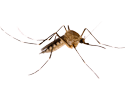Improving Pest Management Communication for Hospital Staff
A 2013 study examining communication errors in hospitals found that the most common offender was the omission of detailed patient information. When patients were cycled through the hospital and into the care of new professionals, details were lost between the two parties and ultimately, caused issues for the patient’s care. As a result, hospitals began adopting a process called SBAR (Situation, Background, Assessment, and Recommendation) for patient handoffs. Those hospitals implementing the system saw positive gains in interdepartmental communication.
Now, imagine your hospital’s pest control communication program. Does it follow a similar set of guidelines? If not, your pest numbers could be drastically underreported. In today’s blog, we discuss ways to encourage active participation in your pest control program and change communication for the better.
Leadership
The first step in any communication plan is assigning duties based on building segments. For each section of the hospital, you will need a point of contact that can effectively disseminate and receive information related to pest control. Perhaps it’s a team of individuals for a larger department. In either case, a pest management lead should be selected from each hospital division. A few questions to consider: How should he or she receive reports? How is this directed back to management? What role does this person currently have? Whose position already has similar responsibilities?
Daily Huddles
Medical teams often have daily huddles to review the staff’s problems and to anticipate any future complications. While this is typically meant to be a discussion among physicians, nurses, and other medical professions, many specialists call for an introduction of other topics during these meetings. These are a great way for your pest control team to interject pest control tips and monitoring techniques. You may receive some pushback from unit leaders, but you must stress that proactive pest management ultimately helps the safety of patients. You’ll quickly gain support by providing ways doctors and nurses can help their patients.
Visual Reminders
Designing posters or other visuals to hang around the hospital is a great way to remind people without explicitly stating it. You can make a big impact by hanging up a few signs in examination rooms, along hallway walls, or in break rooms. These could just highlight a few steps in the communication process, such as who to contact in the event of seeing a pest.
It should be vibrant enough to draw attention, but not over the top. You want the medical staff to feel inspired to look out for pests.
Yearly Training Sessions
It’s important to bring together a representative from all departments in order to be trained in new pest procedures. Working with your contracted pest management company, you can creatively find ways to impart the necessary information.
This also gives an opportunity for other members to interact with one another and share successes on how they’ve been able to communicate their pest strategies: what has worked in the past, what hasn’t, how to improve existing processes. Bringing all of these minds together is bound to improve communication.
Pest Management SBAR
If you really want to create change, you can even create an SBAR system that directly relates to pest management. With the help of your pest management company, you can create small worksheets for reporting pest incidents:
• Situation: where/when did you spot the pest? What was it? Supply a picture if necessary to identify at a later date
• Background: have you seen pests in this area before? Could you document those times?
• Assessment: what should the next step in the process be? Who do you contact immediately following this incident? Who records this information?
• Recommendation: how do you think this should be handled? Based on you action thresholds and knowledge of the pest, what is the recommended treatment option?
You could also include these details on the posters mentioned above. There are countless ways to incorporate the medical staff into your healthcare pest control programs, and we are sure you’ll see an improvement in your pest management plan! Contact Holder’s Pest Solutions to learn how we can help.
Improving Pest Management Communication for Hospital Staff Serving
Houston
Beaumont | Conroe | Spring | Pasadena | The Woodlands | Richmond | Galveston
Baytown | Bryan | Cleveland | College Station | Cypress | Pearland | Sugar Land
Home » Improving Pest Management Communication for Hospital Staff






